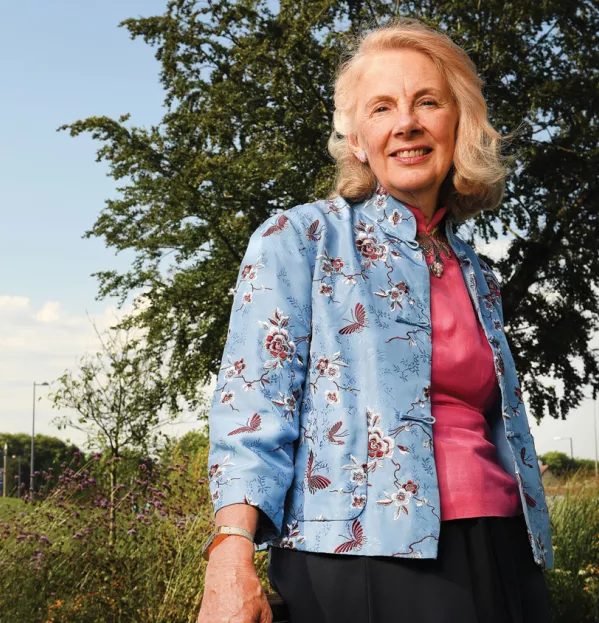TES talks to... Philippa Cordingley

Philippa Cordingley is talking about electricity pylons. It’s not a topic you would expect the chief executive of CUREE - a centre of expertise for evidence-based practice in education - to be talking about, but there is reason in the apparent randomness.
Cordingley is obsessed with continuing professional development (CPD). She has spent the past 20 years trying to find ways to do it better, leading large-scale research and evaluation initiatives for bodies such as the General Teaching Council. She also thinks too many schools are still doing it badly.
Which brings us to pylons.
Just as people tend to see the giant metal frames and forget the wires strung between them, she says schools can focus too heavily on twilight sessions, inset days and research lesson study cycles, while forgetting what goes on in between those obvious totems of CPD. In fact, it is these elements that are actually more important.
“In the inset sessions, coaching sessions and research lesson cycles, you need to be sure that you are putting in the ingredients that help teachers keep it going every lesson in between,” she says.
‘What teachers really want to know is: what are the teaching and learning strategies?’
This assertion comes with a weight of experience behind it. In the 1980s, Cordingley completed a master’s degree in education policymaking and worked for the Inner London and Birmingham education authorities. She later became chief professional adviser for research for the Teacher Training Agency and was commissioned by the NUT teaching union to develop an evidence-based approach to CPD.
It was Cordingley’s work in these roles that prompted her to set up CUREE. This allowed her to more formally pursue her passion for helping teachers understand the impact that research could have on their teaching - and to become as excited about CPD as she was.
CUREE stands for the Centre for the Use of Research and Evidence in Education and, as Cordingley is keen to point out, the most important part is the two little words in the middle: “use of”. While there is currently a lot of attention on conducting pedagogical research - not just within universities, but also by organisations such as the Education Endowment Foundation and the National College for Teaching and Leadership, as well as in schools - this enthusiasm does not always filter down to the people who will eventually be putting the research into practice: classroom teachers.
The main reason for this, Cordingley says, is that most educational research is not written up in a way that is designed to meet teachers’ needs. “If you want research to be of good quality, one of the things it has to do is be a bit generalisable. And the minute you try to make research generalisable, that means having lots and lots of cases and seeing patterns that run in lots and lots of contexts,” she explains. “The problem with that is that it’s great for the researchers in saying research is generalisable, but the teacher doesn’t want something generalisable. They want something for their context and their pupils. So there are tensions between the two worlds.”

Make it ‘particularisable’
To help alleviate these tensions, CUREE works to translate research, making it more accessible for teachers and helping them to apply the theories in practice. Cordingley says this process is about taking something “generalisable” and showing people how to make it “particularisable” for the subjects and age groups that they teach, within the context of their own particular school.
It’s an empowering approach, rather than the didactic one that teachers might expect when someone mentions research.
Too often, CPD is about being told how to do something, rather than being asked to consider a different way of working. This is all wrong, says Cordingley: it is about respecting the teacher’s knowledge of their students and giving them a toolbox of research knowledge that they can use as they see fit.
One way to present research in this way, Cordingley suggests, is to ask teachers taking part in CPD sessions to think of three of their own students throughout the session and to consider how the course content could be applied to working with them. This gives teachers a concrete example of how the things that they are learning can “live” in the classroom beyond the session.
“What the teacher really wants to know about is: what are the teaching and learning strategies? And then, if they think these are interesting and relevant for their kids, they want to look at how rigorous it is.”
For this reason, she advises that CPD sessions should get straight to the point and start with the outcomes of the research.
“We don’t tell the story of the project, we tell the story of the findings,” says Cordingley. “We do include methods and rigour, but only at the end. And we also hotlink every abstract finding to high-quality teacher research that has been peer-reviewed as well. Because teachers are infectious to other teachers - like laughter - it makes sense to them when they hear a piece of largescale research, researched at an individual classroom level by an individual teacher.”
Defending teachers’ territory
In a profession where so much is done to teachers, Cordingley’s approach is urging them to weaponise themselves in defending their own territory - the classroom - with the evidence to support the decisions they make. Hence, the avoidance of ‘pylon’ CPD. To make the process effective, engagement with research needs to be continuous - and it must be collective.
She says teachers need to work together, testing research and creating new ideas, all the while having their own classroom in mind: “[We need to] change everyone’s thinking about CPD being just inset days or a course someone goes on.”
It’s about the wires, she says. As soon as schools understand that, the sooner they will see improvement.
You need a Tes subscription to read this article
Subscribe now to read this article and get other subscriber-only content:
- Unlimited access to all Tes magazine content
- Exclusive subscriber-only stories
- Award-winning email newsletters
Already a subscriber? Log in
You need a subscription to read this article
Subscribe now to read this article and get other subscriber-only content, including:
- Unlimited access to all Tes magazine content
- Exclusive subscriber-only stories
- Award-winning email newsletters